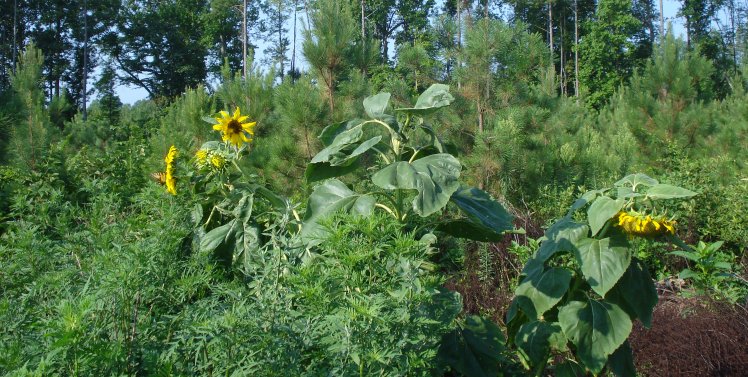
My clover meadows were full of bees this spring. They were still around the sunflowers, although I didn’t plan to write re bees, so I just took a picture of the flowers. It is a very pleasant thing. Today I watched a depressing program on “Nature” on PBS talking about the collapse of honey bee populations. I read about that a couple years ago, but thought that it was mostly studied and addressed. As I recalled, the colony collapse (called colony collapse disorder or CDC) had multiple causes, but none of them really extraordinary. There were some mites and parasites. A lot of the bees were not getting a good and balanced diet and some were overworked (they move colonies around to pollinate different crops).
Sure enough, the “Nature” show was made a couple years ago. More up to date information can be found here and here. It is a problem, but it is manageable. The USDA is vigilant and we can be too w/o going nuts. I worry a lot about things like the emerald ash borer, gypsy moths, pine beetles etc and with the help of extension services, DOF and others, I help address them.
The thing I object to is the apocalyptical tone. Many things will or could be disastrous if not properly managed or addressed. That is why we manage and address them. We always get that BS saying something like, “if nothing is done…” or “if current trends continue …” But something always is done and current trends almost never continue.
Of course the news that a problem is not going to mean the end of life as we know it is not big news. People like to be alarmed and they also look for extraordinary causes to ordinary events. In the bee case, they blamed pesticides, global warming, GMO and even cell phones. Society’s general malcontents take the opportunity of an impending catastrophe to attack the things they don’t like and they are a little annoyed when the catastrophe turns out to be a dud.
Anyway the bees are back, which is good because we need the bees. They pollinate many of our crops, but, of course, we need bees because of the plants we introduced from Europe into America. Honey bees are not native to North America, so no native American plants require honey bee pollination. The Indians in colonial Virginia evidently called honey bees “white man’s flies” and were astonished that the colonists even put flies to work. Honey bees are in North America because we brought them. It was a good move. Not all invasive species are bad. But it does show once again that there are no environments in the world unaffected by humans and we need to make sure manage well rather than abdicate and claim we can separate ourselves.
